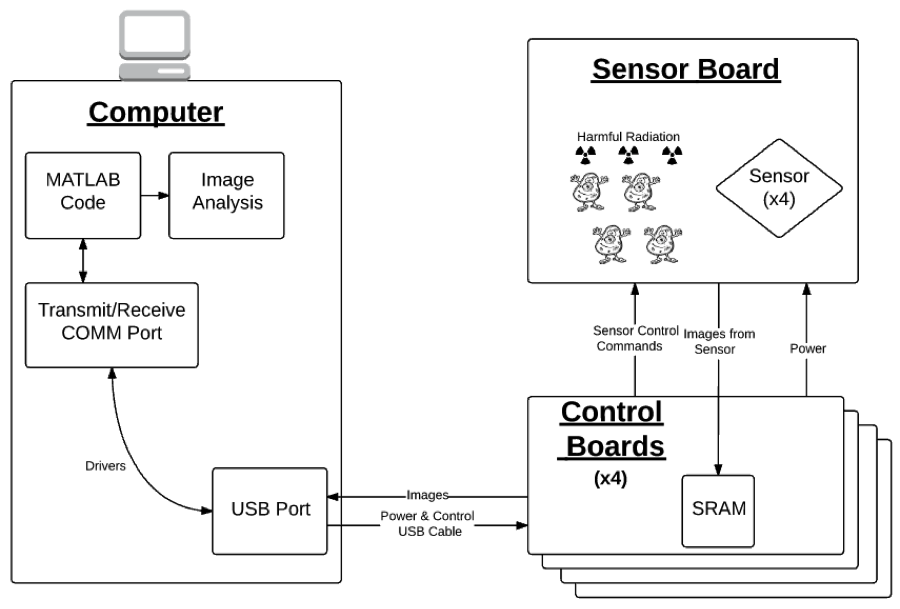| Home | Research | Team Members |
|---|

|
|||||
|---|---|---|---|---|---|
 |
| Problem Overview and System Diagram The effects of radiation in relation to personal health and space exploration have proven to be problematic. Scientific collection and analysis of radiation effects on tissue is needed to determine solutions to harmful radiation effects. The goal of NAU NASA Team ZigZag is to design and create a particle beam data collection system. This project is continued from last year. The previous team worked on a single sensor data collection design. This year, NAU NASA Team ZigZag will design the radiation testing system featuring four sensors in a ZigZag configuration. Each radiation sensor will be controlled from a control board. The sensors will collect data at the same time and transfer the data to a single instance of MATLAB for analysis. These specifications will be implemented to ensure the collected data is valid for scientific analysis. Our team will need to design two types of circuit boards: a sensor board and a control board. Objectives:
Benefits:
FunctionalityThere are four different control boards and one sensor board. Each control board is assigned a sensor that it controls. MATLAB is used as a control mechanism for the I2C interface to receive image data from the sensors. Only one of the control boards will have a trigger. This will allow all boards to function off the same clock cycle instead of having individual clocks. Having one clock will prevent a time discrepancy between the data gathered from the four sensors. This is done to ensure that time is not a factor in the experiment. The master clock will be part of the sensor board so that when triggered all control boards will execute on the same cycle. Each control board has the memory capabilities to store one image before that data is sent to the computer. Once the computer has received the images, they are stored and analyzed
User Interface The main interface used in this project is the Universal Serial Bus (USB). The USB is the interface between the software and hardware aspects of our design. This interface will allow us to program the control boards with the desired MATLAB code. Not only will the USB transfer any necessary data, but it will also power our boards. This eliminates the need for an external AC power source or battery pack. |
|---|
 |
|---|